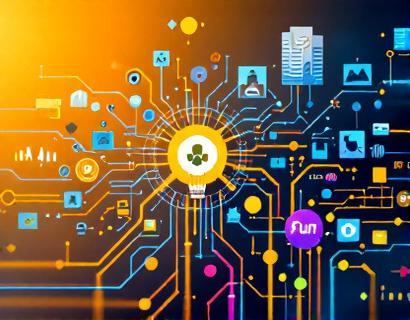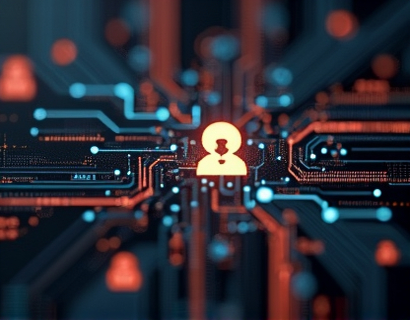Transforming Education with AI-Powered Chatbots: A Comprehensive Guide
The integration of artificial intelligence in educational settings has opened new avenues for learning, making knowledge more accessible and personalized than ever before. Among these innovations, AI-powered educational chatbots stand out as a transformative tool, offering specialized insights to students, families, and educators. This article delves into the capabilities and benefits of these chatbots, focusing on how they deliver industry-relevant knowledge and services through verified content, ensuring a safe and enriching experience for all users.
The Role of AI Chatbots in Education
AI chatbots are designed to simulate human-like conversations through artificial intelligence, enabling them to interact with users in a conversational manner. In the context of education, these chatbots serve as virtual assistants that provide tailored information, answer queries, and guide users through complex topics. For students, they offer an additional layer of support outside the classroom, allowing for self-paced learning and immediate access to resources. Families and educators benefit from these tools as well, gaining insights into educational best practices and industry trends.
Specialized Insights for Students
For students, the primary advantage of AI chatbots lies in their ability to deliver specialized insights that align with their academic needs. These chatbots can provide detailed explanations of complex subjects, from mathematics and science to literature and history. By leveraging advanced algorithms, they adapt to the user's level of understanding, offering simplified concepts for beginners and more in-depth analysis for advanced learners. This personalized approach ensures that each student receives the appropriate level of challenge and support, fostering a deeper understanding of the material.
Moreover, AI chatbots can assist students in their research projects by providing credible sources and verifying the accuracy of information. This feature is crucial in today's digital age, where misinformation can easily spread. By ensuring that the content is verified, these chatbots help students develop critical thinking skills and a discerning approach to information consumption.
Support for Families
Families play a vital role in a student's educational journey, and AI chatbots can significantly enhance parental involvement. These chatbots offer resources and insights that help parents understand their child's curriculum, learning progress, and areas that need improvement. By providing clear and concise information, chatbots empower parents to support their children's education more effectively.
Additionally, AI chatbots can facilitate communication between parents and educators. They can serve as a platform for scheduling meetings, discussing concerns, and sharing updates about a student's performance. This streamlined communication ensures that everyone involved in a student's education is on the same page, fostering a collaborative environment that benefits the child's learning experience.
Resources for Educators
Educators are another key group that can greatly benefit from AI chatbots. These tools can provide teachers with valuable insights into industry trends, pedagogical strategies, and the latest educational technologies. By staying informed about these developments, educators can enhance their teaching methods and create more engaging and relevant lesson plans.
AI chatbots can also assist teachers in grading and administrative tasks, freeing up time for more direct interaction with students. For instance, chatbots can automate the grading of multiple-choice questions or provide feedback on written assignments, allowing teachers to focus on more nuanced aspects of education. This efficiency not only reduces the workload but also improves the overall quality of education.
Ensuring Content Verification and Safety
One of the most significant advantages of AI chatbots in education is their ability to provide content verification. In an era where false information can spread rapidly, ensuring the accuracy of the content is paramount. These chatbots are equipped with sophisticated algorithms that cross-reference information from multiple reliable sources, ensuring that the data provided to users is accurate and up-to-date.
Moreover, the safety of users, especially children, is a top priority. AI chatbots can be designed with child-friendly interfaces and content filters to create a secure environment. Parents and educators can rest assured that the information provided is not only accurate but also appropriate for the user's age and maturity level. This feature is particularly important in maintaining a positive and safe learning experience.
Child-Friendly Versions for Young Learners
Recognizing the unique needs of young learners, AI chatbots can be tailored to create a child-friendly experience. These versions of the chatbot use simpler language, engaging visuals, and interactive elements to make learning enjoyable for children. The content is carefully curated to be age-appropriate, ensuring that young users remain engaged and motivated.
For example, a child-friendly chatbot might use gamification techniques to teach mathematical concepts or employ storytelling to explain historical events. These methods not only make learning more fun but also help in retaining information better. By making education accessible and enjoyable, AI chatbots can play a crucial role in fostering a love for learning from a young age.
Enhancing Knowledge Through Industry Insights
Beyond academic subjects, AI chatbots can provide valuable insights into various industries, helping students and educators understand the practical applications of their studies. For instance, a chatbot focused on technology might discuss the latest advancements in artificial intelligence, cybersecurity, and software development. Similarly, a chatbot in the healthcare field could provide updates on medical research, new treatments, and industry regulations.
These industry insights are crucial for students considering future careers, as they gain a better understanding of the skills and knowledge required in different fields. Educators can also use this information to align their teaching with industry needs, ensuring that students are well-prepared for the workforce.
Building a Safe and Educational Environment
The integration of AI chatbots in educational settings must prioritize the creation of a safe and educational environment. This involves not only content verification but also implementing robust privacy measures to protect user data. Chatbots should adhere to strict data protection standards, ensuring that personal information is securely stored and not misused.
Furthermore, the design of the chatbot should be intuitive and user-friendly, with clear guidelines on how to use the platform. For younger users, parental controls and monitoring features can be implemented to ensure that their online interactions are supervised and appropriate.
Conclusion
AI-powered educational chatbots represent a significant advancement in the way we approach learning. By providing specialized insights, verified content, and a safe environment, these chatbots enhance the educational experience for students, families, and educators alike. As technology continues to evolve, the potential for AI in education is vast, offering new opportunities for personalized learning and industry engagement. Embracing these innovations can lead to a more informed, engaged, and prepared generation of learners.











































